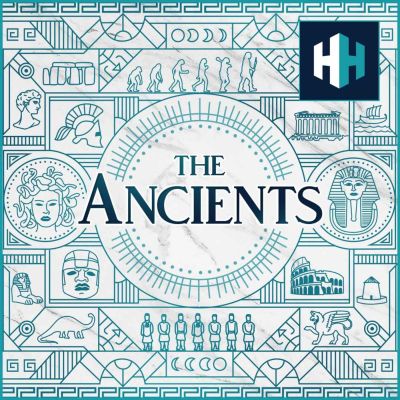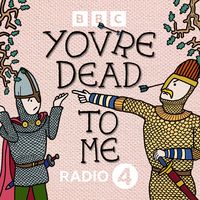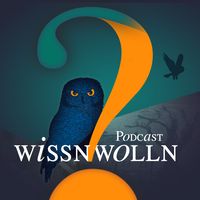Alexander the Great has gone down in history as one of the greatest military leaders of all time, despite only living to the young age of 32. During this time, due to his battle tactics he was able to conquer land stretching from Greece to northwestern India.For this mega episode we've compiled the definitive list of Alexander the Great's biggest battles: The Battle of Granicus, the Battle of Gaugamela and the Battle of the Persian Gate. We hope you enjoy this episode and let us know if you agree or disagree.You can email the podcast at theancients@historyhit.com or leave us a review.You can also take part in our listener survey here.
https://www.historyhit.com
Gesamtlänge aller Episoden: 12 days 19 hours 29 minutes
recommended podcasts
episode 419: Apollo: God of the Sun
Apollo, the favourite son of Zeus and twin brother of Artemis, was a Greek God with many faces. Perhaps most famous as Phoebus, the God of the Sun, he was the patron of poetry and prophecy, of music and dance. And yet he also possessed a darker side. He was a terribly vengeful character and brought death and disease to both those he hated and loved through his trademark poisonous arrows...
episode 417: The Goths
The Goths are renowned for many things, not least sacking Rome in 410 AD and helping to bring about the fall of the Western Roman Empire. They were a 'barbarian' people from across the Danube who began migrating into the Empire during the 4rd and 4th centuries, pushed out of their ancestral nomadic lands by the onrushing Huns. But what were their origins? And did they really cause the fall of Rome?
In this episode of The Ancients, Tristan Hughes speaks to Dr...
episode 416: Looted Artefacts: Black Market of Archaeology
Have you ever wondered about the dark side of archeology? The illegal seizing of ancient artefacts? The looting of goods from age old historical sites and their sale on the black market? Well it is a practice that goes back hundreds of years and today we’re exploring how it works, why it happens and what government bodies are doing to prevent it.
In this episode of The Ancients Tristan Hughes is joined by Prof...
episode 415: The First Europeans
Europe’s earliest known humans lived over 1.2 million years ago. After initially roaming the plains of Iberia in small groups, they spread across the Pyrenees into the wider European continent. But for more than 100,000 years all traces of humans in these regions vanish. The question is…what happened?
In today’s episode of the Ancients, Tristan Hughes is joined by Dr. Chris Stringer, and by Dr...
episode 414: How to Survive in Babylonia
Would you be able to survive in ancient Babylonia?
In this episode, Tristan is joined once again by Amanda Podany from California State Polytechnic University to discuss the realities of daily life in this fascinating empire. Together, they discuss everything from clay tablet literature and ancient board games to crime, slavery and female entrepreneurship in the era of King Hammurabi c. 1750 BC.
Produced by Joseph Knight. Edited by Aidan Lonergan...
episode 412: The Great Sphinx
The Great Sphinx of Giza is one of the most iconic monuments from ancient history. 73 meters in length and 20 meters high, the huge limestone statue depicts a mythical creature with a lion's body and a human head thought to represent Khafre, an ancient Egyptian pharaoh of the Fourth Dynasty during the Old Kingdom (c. 2570 BC)...
episode 411: Pontius Pilate
Pontius Pilate was the Roman Prefect of Judea during the reign of Emperor Tiberius and is most famous for condemning Jesus of Nazareth to death by crucifixion in the Four Gospels. But who really was he? And how much do we know about him?
In this Easter special of The Ancients, Tristan speaks to Prof. Helen Bond to delve deeper into the life of Pontius Pilate, and discover what else we know about this famous Roman governor...
episode 410: The Pantheon
The Pantheon is one of the greatest Roman monuments still standing. First built as a pagan temple by Marcus Agrippa during the reign of Caesar Augustus, it was rebuilt in its current form by Emperor Hadrian in AD 126 after a devastating fire and still stands just under two thousand years later almost exactly as the Romans intended. It’s famous free-standing dome is a marvel of Roman architecture and engineering, and makes it one of Rome’s most popular tourist attractions to this day...
episode 409: Britain After the Ice Age: Star Carr
Over 13,000 years ago, Britain emerged from the ravages of the Ice Age as a changed land. Mesolithic hunter-gatherers who had adapted to cold climates were presented with new opportunities by the retreating glaciers that could transform the way they lived...
episode 407: Great Wall of China
It's one of the most iconic structures in the world: The Great Wall of China.
But is it just one wall? And who built it and why? Today, Tristan Hughes is joined by William Lindesay OBE to delve into the ancient history of this epic structure and to answer these questions and more.
Together, they uncover the origin story. From the Warring States around 300 BC to the Qin Dynasty and China's first emperor, and then to its expansion during the Han Dynasty...








































